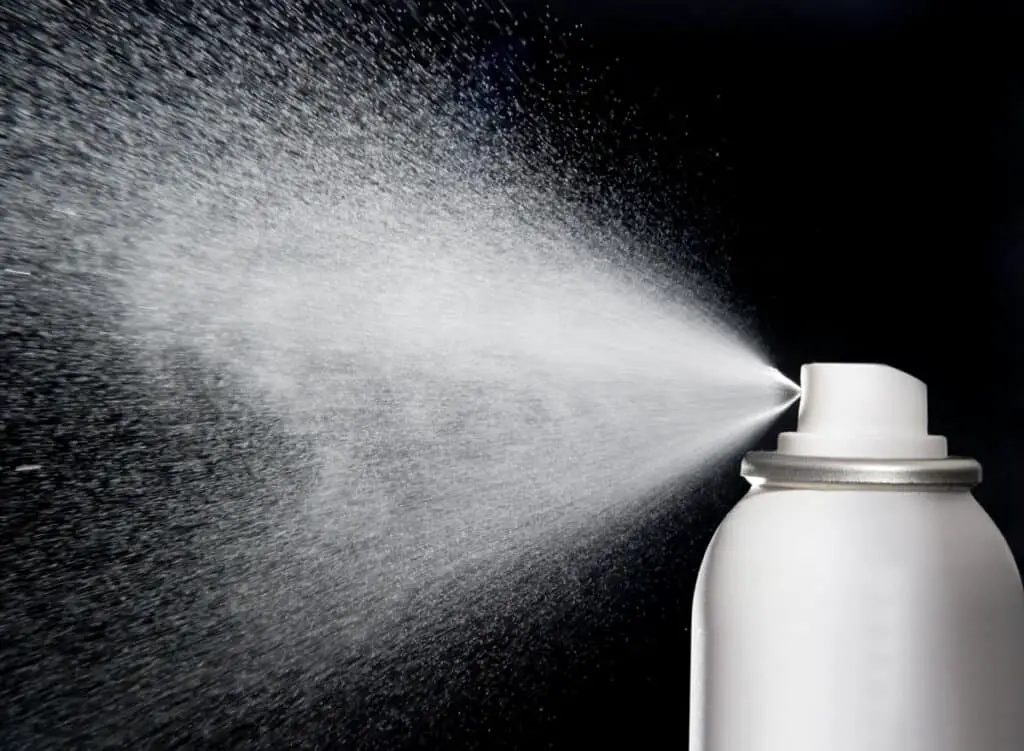Aerosols like deodorant spray cans are a cause for confusion in the world of recycling and kerbside collections, but it’s actually straightforward. Today we’re going to squash a couple of myths around when aerosols like body sprays can go into recycling bins.
Contents
Checking Cans Are Empty
Empty aerosol cans that are completely used go into your recycling bin with tin cans. Full or partly consumed spray cans must not go into recycling bins or general waste. The pressure remaining in non-exhausted tins could be dangerous in a bin lorry, so use them or take them to the tip.

Products Using Aerosol Cans
There are a number of aerosol style cans that are commonly found in UK homes. These include:
- Deodorants and body sprays
- DIY sprays like WD40
- Cleaning products like some disinfectants and furniture polish
- Makeup and cosmetics like hair spray and some tanning products
How To Identify An Aerosol
Generally, an aerosol is operated by pushing down a nozzle, usually on top of a can. The pressure inside the can propels the product out, often in the form of a mist.
Do not confuse an aerosol with a pump spray, a common example would be a glass spray cleaner or a hand soap dispenser like those made by Carex. These pumps are usually on plastic bottles, unlike aerosols which usually need the strength of a metal can to operate safely.
If you’ve got pump style bottles to dispose of, see our page on Terracycle to recycle them.
Aerosol Can Bans And Ozone Damage
Back in the 1980s, scientists noticed depleting Ozone over Antarctica. It was narrowed down to a primary cause from CFCs, short for Chlorofluorocarbons.
CFCs were widely used in aerosol sprays, but phased out relatively quickly when the damage to the protective ozone layer was uncovered. Due to the huge potential consequences of losing more ozone protection mainly resulting in increase UV light from the sun, CFC use was banned worldwide in 1987.
Aerosol cans themselves were changed, but not banned, because they could use a different method to propel out their contents, known as Hydrofluorocarbons, or HFCs. While they’re still far from perfect environmentally, they use hydrogen rather than chlorine to operate which is less environmentally harmful.
As a side note, it wasn’t just aerosol cans that were affected by the ban on CFCs, globally a huge number of refrigeration appliances (mainly fridges and freezers) also changed their technology too.
Spray cans That Aren’t Empty
Due to the risk of exploding in an uncontrolled manner, aerosols are only safe in kerbside waste collections if they’re completely empty.
The following clip shows what can happen if cans become damaged when handled after they leave your home and become damaged. The explosion happened at Hills recycling depot near Calne in Wiltshire:
As you can see, just 10 seconds earlier, the forklift driver was immediately next to the site of the explosion, so this could have been significantly worse.
It’s easy to see how dangerous this could be if it happened inside a dust cart driving along a busy road after collecting recycling containing unspent aerosols.
In order to make sure there is no risk, simply make sure that you use up the contents of the aerosols before placing them in your recycling bin.
To be sure that they’re empty, you can hold down the nozzle to check no further product is emitted. In addition, you should not be able to hear air escaping once the can is empty.
Even if the product has run out, if you hear air escaping when you push the top down, you need to continue to let it escape to consider it empty.
If You Have No Use For The Contents Of An Aerosol
If you’ve got a product you no longer need – perhaps a body spray you don’t like the smell of, then gradually empty it outdoors into the open air. Never spray continually for longer than a product is designed for – the instructions might suggest how long for a maximum at one time.
While you might have emptied most of an aerosol in one go in the past, it’s a good idea to do so gradually. The pressure change inside the can could cause the can to fail if it changes too quickly. Most products are designed well to take this into account, but it’s wise to spray outdoors and for no more then 15 to 30 seconds at a time.
The reason you shouldn’t spray for longer periods indoors is also that breathing in large quantities of products can be harmful – hence the advice to do so outdoors where the spray can dissipate quickly.
Camping Gas Cylinders
Camping gas cylinders are not the same as aerosols, so never put them into recycling bins. They should be taken to the local tip (HWRC) to be carefully handled and disposed of. The same applies for larger cylinders that you might use for gas barbecues or even cooking in caravans or motorhomes.
